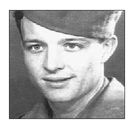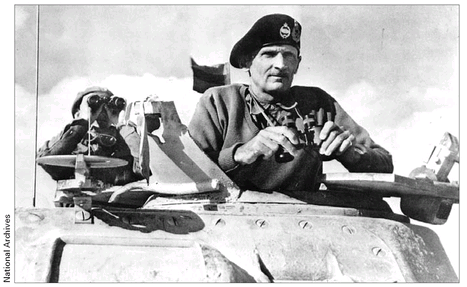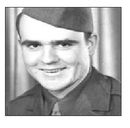War Stories III (14 page)
Authors: Oliver L. North

The armada that landed Lieutenant Green and his comrades in North Africa consisted of both U.S. and British ships. The landing force included the entire British 78th Division. But because of French bitterness toward the British, every effort was made to convince the Vichy naval and ground forces that Torch was an exclusively American operation. In the Eastern Task Force that landed at Algiers, more than half of the soldiers going ashore were Britishâbut they all wore an American flag sewn to their shoulders.
Seven hundred miles to the west, the 35,000 soldiers of Patton's Western Task Force had their own problems with the Vichy French. Shortly after midnight on 8 November, the 3rd and 9th Infantry Divisions and the 2nd Armored Division landed across three Moroccan beachesâSafi, Casablanca, and Port Lyautey. Though taken completely by surprise, Vichy units at Port Lyautey put up a spirited defense against a “green” American infantry, inflicting dozens of U.S casualties before surrendering two days later.
On 10 November, Admiral Darlan, the senior French commander in North Africa, signed an armistice with General Mark Clark, Eisenhower's representative in North Africa. Vichy troops laid down their armsâbut that didn't end the fighting.
Hitler, outraged at the surrender of the Vichy forces in North Africa, immediately occupied the rest of Franceâand started reinforcing Rommel's battered army, now retreating west toward Tunisia through the Libyan desert. The first German reinforcements flew into Tunis on the night of 10 November, and seaborne deliveries of troops, supplies, armor, and artillery from German garrisons in Sicily, Italy, and France began flowing to North Africa within days.
To ensure that the German reinforcements wouldn't be able to move west, Eisenhower committed his paratroopers. Between 12 and 16 November,
the British 1st and 3rd Parachute Brigades and the U.S. Army's 509th Parachute Infantry Regiment made the first Allied airborne assaults of the warâseizing airfields along the coast and vital passes through the Atlas Mountains along the border between Algeria and Tunisia.
the British 1st and 3rd Parachute Brigades and the U.S. Army's 509th Parachute Infantry Regiment made the first Allied airborne assaults of the warâseizing airfields along the coast and vital passes through the Atlas Mountains along the border between Algeria and Tunisia.
From mid-November on, the Americans who landed in Torch wouldn't be confronting dispirited Vichy troopsâthey'd be fighting the battle-hardened Wehrmacht and Luftwaffe. By the time Patton's armor and infantry started moving east from Marrakesh, on 17 November, German bombers from France, Sardinia, and Tunisia were operating in the skies over the entire Torch battle area. And very soon thereafter, Rommel's reinforced Desert Armyâand the weatherâwould create unforeseen challenges. Private First Class Jefferson White, from Tallahassee, Florida, was there for all of it.
PRIVATE JEFFERSON WHITE, US ARMY
2nd Armored Division
Morocco, French North Africa
28 November 1942
Morocco, French North Africa
28 November 1942

My father was a farmer who died when I was a baby, forcing my mother to take over and run the farm. The Depression was a tough time for everyone. Because we lived on a farm we always had foodânone of us went hungry or had to stand in bread lines. But during the '30s, farm labor only made just fifty cents a day, working from sun up to sun down. That's why I dropped out of high school and joined the army in March 1941, at age seventeen.
I remember December 7 vividly, because it put us on a state of alert. We had just returned from the Louisiana maneuversâwhere Eisenhower had first made his name. He was just a colonel in those days, but he really knew how to get things done and everyone was impressed by him.
We started getting in a lot of new soldiers right after Pearl Harbor, and in the late spring of '42 they sent us to Tennessee, on more maneuvers. From there we went to North Carolina, at Fort Bragg, where we spent
most of the summer and the early autumn. Then one night, they backed up a freight train, loaded us up, and took us to Newport News, Virginia. There, we loaded up onto transport ships. Everyone was really concerned, because the German submarines were very active out in the Atlantic at that time.
most of the summer and the early autumn. Then one night, they backed up a freight train, loaded us up, and took us to Newport News, Virginia. There, we loaded up onto transport ships. Everyone was really concerned, because the German submarines were very active out in the Atlantic at that time.
No one told us where we were going. We all thought that we were headed for the South Pacific. All the war news was about the battles going on thereâso that's where we figured we were heading. But, of course, we were wrong.
After we had been out at sea for several days, Captain Whitfield came on the intercom system, and invited everyone to come up to the deck. It was early in the morning, but every direction you looked there were ships. We were told that we were part of the largest convoy that had ever been assembled. There were aircraft carriers, cruisers, destroyers, and battleshipsâall surrounding the troopshipsâto protect them.
Now, given the weather and the temperature, it was pretty clear that we weren't in the South Pacific, but we still didn't know where we were headedâbecause the weather was so terrible you couldn't see the sun or the stars. Some guys guessed that we were headed to England through the North Atlantic because the waves were so rough. It was so bad that it broke the chains on some of the tanks that were secured in the hold. One of the tanks broke loose and killed a man.
Late on the afternoon of November 7, we were told to muster for haircuts and then a nice hot mealâthat would be our last real food for some time. That's when we were told that we would be landing on the coast of North Africa.
Patton, our commander, was a very colorful character and a good leader. He was a genius in tank warfare and demanded the very best of everyone else who served under him. Later, Patton got the nickname of “Old Blood and Guts.” But he really cared about his men and we all respected him.
My tank platoon landed at Safi shortly after midnight on the morning of 8 November 1942. We were surprised that there weren't any enemy
soldiers on the beach to fight us. When we came ashore we had been told to expect to be opposed by the French garrison in the port and we were all pretty anxious. But none of them showed up so we didn't have to fight them. The invasion was really a walk-in. We could've just pulled up to the docks and unloaded.
soldiers on the beach to fight us. When we came ashore we had been told to expect to be opposed by the French garrison in the port and we were all pretty anxious. But none of them showed up so we didn't have to fight them. The invasion was really a walk-in. We could've just pulled up to the docks and unloaded.
Early the next morning we were told to move up the road toward Casablanca. For the next few days, the only danger we faced was from mines that had been planted on the roads.
But then everything changedâthe Germans figured out we were in Morocco and we started to get attacked by their air force and as we moved east, toward Algeria, we ran into their patrols. One day we were in a convoy of half-tracks, tanks, and trucks and a shell hit the right side of our line. General Patton came up in his light tank and stopped right where the shell had hit. And he says, “Go get 'em.”
So we did, but then, a few minutes later, a twin-engine plane flew over. The Germans had been strafing our convoy, so everybody was shooting at the plane and it landed in the desert. We sent a patrol out there to check and it turned out to be an Italian major general that had come to surrender. That was our total experience with the Italians in North Africa.
In December, some of us from 2nd Armor Division were sent to reinforce units in Algeria because the Germans were going to start a winter offensive. That's when we found out about the German Tiger tank. It was said to be the best tank in the world, with an 88 millimeter anti-aircraft gunâa rapid fire weapon. But it couldn't “lob” shells like our gunsâand it wasn't as mobile in that terrible terrain. North Africa maybe a desertâbut it's a mud-hole in winter. The Tiger was so heavy that in soft ground it often got stuck.
The Germans I saw were good soldiers. But they needed somebody to tell 'em what to do, how to do itâand when. The Americansâwe were mostly farm boys. If we couldn't whip you one way, we'd whip you another. We had guys inventing things and coming up with practical ideas. One soldier invented a gadget that mounted on front of the tanks to clear
mines. Then someone did the same thing with the half-trackâusing heavy log rollers and chains to cause mines to explode in front of the vehicle instead of under it.
mines. Then someone did the same thing with the half-trackâusing heavy log rollers and chains to cause mines to explode in front of the vehicle instead of under it.
We might have been green troops when we landed, but we quickly learned everything about our equipmentâwhat it could do, and what it couldn't do. We learned warfare “on the job” as it were. For example, one of our machine-gunners switched out the rounds in the belts of .50-cal ammunition so that one round was standard ball, the next was armor piercing, then a tracer. That way we could shoot by eyesight, not by gunsight. Those kinds of innovations kept a lot of American soldiers alive.
When Eisenhower moved his command post from Gibraltar to Algiers on 23 November, he hoped to press the attack toward Tunis in a matter of days. But his army, plagued by logistics delays, inadequate numbers of trucks, and the lack of sufficient air cover, quickly found itself confronted by the realities of winter in North Africa.
Monsoon-like rains quickly turned roads into muddy tracks. Airfields became swamps. And despite the best effort of his senior air officerâMajor General Jimmy Doolittle, the man who had led the B-25 raid on Japan just seven months beforeâGerman aircraft were more prevalent than those of the Americans in the skies overhead.
Â
General Bernard Montgomery in North Africa.

On 9 December, a month after the Allied landings, Hitler sent Jürgen von Arnim to take command of the 5th Panzer Armyâand put Rommel in overall command of Axis troops in North Africa. By the end of December, Rommel's desert force, under relentless pressure from Montgomery's 8th Army, had retreated more than 500 miles west from El Alamein. Meanwhile, Eisenhower's 1st Army was threatening the Axis rear in Tunisia with American and British units spread from the Mediterranean coast, up into the Atlas Mountains, south of Tunis.
In order to make a final push that would close the trap on the Desert Fox, Eisenhower soughtâand was grantedâfresh troops to bring his units up to full strength. Eventually, some 80,000 U.S. and British replacements and reinforcements would be sent to North Africa. One of the first to arrive was PFC George Perrine, a young soldier from the Appalachian Mountains.
PRIVATE GEORGE PERRINE, US ARMY
2nd Armored Division
Casablanca, Morocco
29 December 1942
Casablanca, Morocco
29 December 1942

I grew up in the mountains of Kentucky and southwestern Virginiaâjust a Snowy Mountain boy, from start to finish.
In 1939 when the war started in Europe, I was a senior in high school and was out looking for work when the Japanese bombed Pearl Harbor in December '41. I figured that I was probably going to be drafted so I volunteered.
I enlisted in the Army April 1, 1942âand shipped out for armor basic training at Fort Knox, Kentucky. They were opening schools for everythingâtracked vehicles, cooks and bakers, gunnery specialists, radio operators, and technicians.
I was one of 600 men sent for technical training. The school lasted for ten weeks, but we didn't get anything except the basics. Believe me, we were green as grass. The Army knew it, so we were divided up among units that had already been trained, figuring that we could always call on someone with more experience for help.
In December of '42, we shipped out of New York harbor aboard the SS
Argentina
âheaded for North Africa. We landed on Christmas Eve, 1942, at Casablanca. On Christmas Day there was a German air raid on the harbor. We were sitting out there, in the open, watching it. That's how “smart” and “well trained” we were. We hadn't dug foxholes or taken cover. At night, when they came back to bomb the harbor again, we were still sitting there.
Argentina
âheaded for North Africa. We landed on Christmas Eve, 1942, at Casablanca. On Christmas Day there was a German air raid on the harbor. We were sitting out there, in the open, watching it. That's how “smart” and “well trained” we were. We hadn't dug foxholes or taken cover. At night, when they came back to bomb the harbor again, we were still sitting there.
You can seeâwe were a young, inexperienced army in many ways. We hadn't developed as much as the Germans soldiers had.
Our cantonment held three separate battalionsâEngineer, Medical, and Reconnaissance. I was assigned to the Reconnaissance Battalion. My new platoon commander told me, “You've got the easiest job in the army.”
I asked, “What in the world are you talking about?”
He says, “All you have to do is find the enemy. Then all you have to do is stay alive to get back to tell us what you found. Otherwise, it won't help us.”
That was my introduction to reconnaissance. But it was the truthâin a brutal sort of way.
Our CO, General Lucian Prescott, told us that a soldier carrying a field pack and weapon should be able to cover four miles in fifty minutes. He called it “the Prescott Trot.” It really wasn't a walkâand it wasn't quite a run. It just about killed us to start with, but in time, and after lots of training, we could run
five
miles in fifty minutes. By January we were able to do four milesâtake a ten-minute breakâand then do four more. That's how we learned to assault a ridgeâtake your equipment and run to the top and flop down in position all out of breath. Believe me, we might have been in the armor, but we learned to cover a lot of ground on foot.
five
miles in fifty minutes. By January we were able to do four milesâtake a ten-minute breakâand then do four more. That's how we learned to assault a ridgeâtake your equipment and run to the top and flop down in position all out of breath. Believe me, we might have been in the armor, but we learned to cover a lot of ground on foot.
By the time we left Morocco and headed for Algeria and Tunisia, we were in really good shape. And that was a good thing, because the Reconnaissance units spent a lot of time in the Atlas Mountainsâlooking for the Germansâwhile they were looking for us. And one thing was for sure, we had thought the Germans were goodâbut they were really no better than us. They just had more experience.
The Germans also had a better gun on their tanks than we didâand they knew how to use 'em. What they did, they did well. But they couldn't do anything on their own. They didn't try and figure out things the way we do, and they weren't innovative. Despite our inexperience, we were quick to learnâand we were smart enough to know what we still needed to learn. If we persisted in doing well and learning well, we were really going to be better than the Germans.
Other books
Inside Madeleine by Paula Bomer
Killer Waves by Brendan DuBois
Putting Makeup on Dead People by Jen Violi
The Farwalker's Quest by Joni Sensel
Cartography for Beginners by Jones, Jenna
Exposed to You by Andra Lake
Trust: Betrayed by Cristiane Serruya
Bear-ly Human (Bear Claw Security Book 4) by Terry Bolryder
Designated (Book 2): Designated Quarantined by Cooper, Ricky
Young Philby by Robert Littell